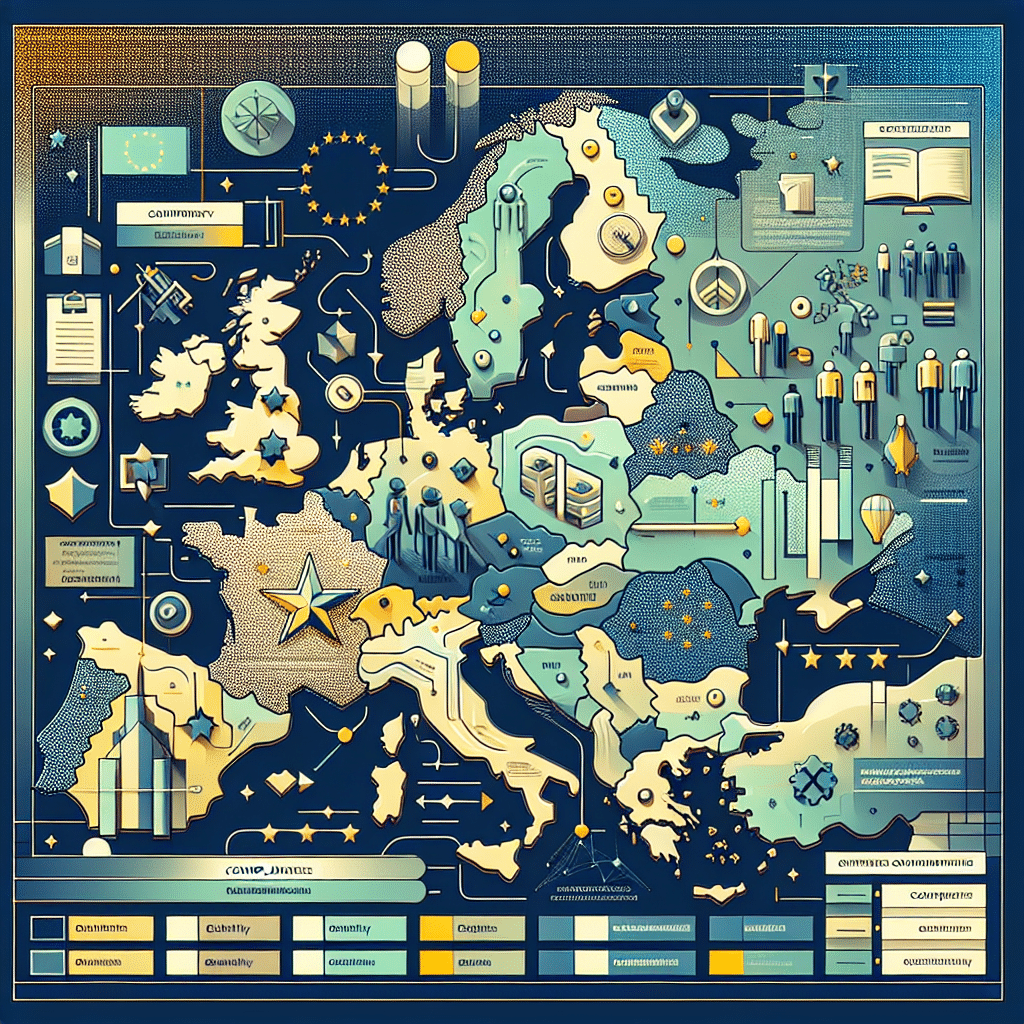About eldris
epr.eldris.ai leads the EPR sector, in fast, automated, AI Agent EU packaging, WEEE, and Battery Compliance for Brands, E-Commerce and Service based businesses expanding into the EU.
In This Article
- Understand that EPR obligations are nationalised despite EU-level directives
- Register products before market entry in each respective country
- Include WEEE, packaging, and batteries in your compliance plan
- Use digital platforms to centralise and automate compliance functions
- Delegate local representation in countries where required
- Periodically audit your risk exposure and compliance status
Introduction to EPR Registration Across the EU
What Is Extended Producer Responsibility?
The concept of Extended Producer Responsibility (EPR) lies at the heart of sustainable product policy in Europe. EPR Registration Requirements legally bind producers to manage the post-consumer stage of their products’ life cycle. This includes the full responsibility for financing, collecting, recycling, and disposing of waste. As governments rally to support circular economies, EPR systems enforce producer accountability to reduce environmental impact through structured compliance frameworks. EPR is no longer optional; it’s a central pillar of environmental regulation within the EU. The landscape varies widely across Member States, with distinct requirements, registration authorities, and reporting obligations. Understanding these nuances is essential for any company operating across European borders.

General EPR Framework in the EU
Core Obligations for Producers
EU-directives such as the Waste Framework Directive (2008/98/EC), the Packaging Waste Directive (94/62/EC), the WEEE Directive (2012/19/EU), and the Batteries Directive (2006/66/EC) underpin the EPR Registration Requirements throughout the bloc. Producers must register with national authorities or appointed organisations in each country they sell into. The core obligations include:
- Registering before selling applicable products in an EU country
- Labelling products per national recycling requirements
- Filing regular reports on volumes placed on the market
- Financing collection, recycling, and recovery systems
- Ensuring take-back schemes are in place where applicable
While the EU establishes broad requirements, application rests with national laws. This causes significant fragmentation, making compliance a technically intensive burden for multinational enterprises. Learn more about EU Country Compliance & Regulatory Guides
Country-by-Country Comparison of EPR Requirements
Key Differences in National Regulations
Although the European Union strives for harmonisation, EPR regulation is implemented separately by each of the 27 member countries. This leads to notable disparities, particularly regarding thresholds, registration categories, and enforcement protocols. For instance, Germany’s VerpackG requires foreign producers to contract with a local authorised representative, while France allows direct registration. Similarly, Portugal mandates annual pre-declarations, whereas the Netherlands does not. Language barriers can add to the complexity, as obligations are frequently communicated only in native tongues. The scope of regulated products also varies – Italy may treat packaging inserts differently from Belgium, and Spanish regulation uniquely covers some composite materials. For global companies, such nuances make tailored compliance strategies essential. Ensuring alignment with each country’s EPR Registration Requirements minimises exposure to administrative penalties and reputational damage.
Packaging EPR: Registration and Reporting Deadlines
Checklist by Member State
Packaging waste remains one of the most heavily regulated waste streams. Each Member State sets its own process for initial registration, ongoing reporting, and documentation retention. In Germany, companies must use the LUCID Packaging Register before placing packaging on the market. France requires registration with ADEME and annual declarations on Citeo. Here’s a quick comparative checklist:
- Germany: Registration with Zentrale Stelle, annual data submission by May
- France: ADEME approval, quarterly/annual declarations via Eco-organismes
- Spain: Registro de Productores, submission via Ecoembes or Ecovidrio
- Sweden: Avfall Sverige coordination, semi-annual data submissions
- Austria: Altstoff Recycling Austria (ARA), pre-registration is mandatory
Smaller enterprises are not always exempt. Many jurisdictions maintain de minimis thresholds, but these too differ markedly. Producers must verify whether they exceed national thresholds, as failing to register is a compliance breach, regardless of intent. Timing is also critical. Missed reporting deadlines have resulted in suspension of distributor status in several countries.
WEEE Compliance and National Nuances
Electronics and Electrical Equipment EPR
The EPR Registration Requirements for waste electrical and electronic equipment (WEEE) are governed by national transpositions of the WEEE Directive. The scope usually includes small and large household appliances, IT devices, lighting equipment, and user terminals. Each country has a registry – for example, Stiftung EAR in Germany, or Recylum in France – that producers must register with and report to. Local nuances deeply affect compliance processes:
- Germany: Registering appliance categories with Stiftung EAR is necessary prior to sales; fees apply per device type
- France: Registration with Recylum or Ecologic depending on device category
- Italy: Enrolment via the Registro AEE and appointment of a Responsible Person is required for foreign entities
Distributors or online platforms can be held responsible if producers fail to comply. Additionally, recovery targets differ across countries and often necessitate physical take-back solutions, especially for B2B products. Accurate categorisation and financial contributions are determined based on device weight and volume. Training internal compliance teams on WEEE distinctions is indispensable. Automation can assist. Read a related article
Battery EPR Requirements per Country
Overview of Obligations and Responsible Parties
The battery sector has distinct EPR Registration Requirements due to hazardous substances involved in battery waste. The Batteries Directive covers all battery types – portable, automotive, and industrial – and obliges producers to ensure collection schemes, labelling, and performance reporting. National implementation varies, with key examples as follows:
- Spain: Access via Fundación Ecopilas to handle consumer battery recycling
- France: Coordination via Screlec; volume-based declarations every quarter
- Belgium: Bebat is the collective scheme operator, but DIY importers also have legal duties
In many Member States, foreign companies must appoint an authorised representative to fulfil compliance mandates. Producers must also provide warranties of financial responsibility for battery waste treatment. Document retention obligations can extend up to ten years. Member State audits are growing in frequency, with strict penalties for under-declaration or missed filing deadlines. As enforcement tightens, producers are encouraged to engage with third-party compliance providers with local expertise, reducing room for manual errors.
Registration Bodies and Local Authorities
Contacts and Procedures by Nation
Identifying the correct national authority is the foundation of compliance. Each country has designated EPR institutions, some of which are governmental while others are privatised clearinghouses. Below is a breakdown by select countries:
- Poland: GIOŚ (General Inspectorate for Environmental Protection) – direct submission on their online portal
- Netherlands: Afvalfonds Verpakkingen – online registration and payments gateway
- Hungary: National Waste Management Authority – local legal entity required for full registration
Administrative costs are non-negligible. Some authorities charge annual subscription fees, while others impose penalties for late registration. Physical documentation, apostilled translations, and appointment of a fiscal representative may be necessary. These procedural intricacies often delay market entry, so early planning is advisable. Leveraging a consolidated EPR compliance timeline helps unify disparate registration flows across borders. Detailed EPR regulations comparison across Europe
Common Pitfalls and Compliance Errors
What Companies Often Miss
Despite good intentions, many firms fall short due to easily avoidable oversights. A common error is assuming that a one-time registration suffices. Most schemes require ongoing data uploads and active declarations. Businesses also neglect to update data when product volumes increase or change categories. Furthermore, misunderstanding the distinction between B2C and B2B waste types leads to misfiling or under-reporting. Inconsistent brand usage across legal entities introduces further incompatibilities. Also, neglecting authorised representation in markets like Austria or Germany can result in product bans or seized stock. Routine risk assessment and maintaining documentation trails protect against both lawsuits and regulator scrutiny. Internal audits at least annually are highly recommended for firms managing complex product portfolios.
How to Tailor Your EPR Compliance Strategy
Tips for Multi-country Operations
To effectively manage EPR Registration Requirements across the EU, firms must adopt a customised approach based on geographic scope and product structure. The following steps serve as a starting framework:
- Map out your product placement countries and applicable EPR streams (packaging, electronics, batteries)
- Create a compliance inventory, tracking deadlines, contacts, and reporting cadences in each nation
- Assess local language capabilities or partner with in-country agents who provide translation and representation
- Integrate reporting tools into enterprise resource management systems to centralise data gathering
- Designate a compliance lead or team member to act as the EPR coordinator
Regional planning is critical. Countries that share linguistic or cultural traits – such as the DACH region – allow for synergies in operating processes. Always review updates to national laws at least quarterly. The European Commission continues to issue revised directives (e.g., Packaging and Packaging Waste Revision Proposal of 2022), further underlining the need for agility.
Digital Tools for Managing EPR Across Borders
Using AI and Platforms to Streamline Compliance
Digitalisation has transformed EPR compliance from an administrative burden into a scalable, proactive process. New platforms offer multilingual dashboards, deadline alerts, and real-time data validation. Providers such as ERP, Take-e-way, and EcoLogic offer integrated EPR portals that synchronise multiple country filings under one interface. Artificial intelligence also plays a growing role. For instance, machine learning helps categorise products correctly across countries, reducing reliance on manual coding. Realtime compliance scoring metrics give companies risk visibility, enabling issue-flagging before regulatory intervention. For multinationals, these platforms become backbone systems. They enable audited, automated compliance that scales well across jurisdictions with varying complexity. Seamless data exports, audit trails, and integrations with invoicing or CRM systems also provide extended value.
“Mastering EPR Registration Requirements isn’t a legal checkbox — it’s a future-proof investment in sustainable market presence.”
Final Thoughts on EU EPR Strategy
Successfully navigating the EPR Registration Requirements across the European Union demands attention to detail, operational discipline, and strategic foresight. With fragmented rules, multiple waste streams, and varied registration authorities, EPR compliance is undeniably one of the most challenging regulatory landscapes. Yet it offers opportunities too. Organisations that integrate EPR into their risk and ESG frameworks gain both regulatory resilience and visible green credentials. With a blend of structured planning, digital tooling, and localised execution, EPR compliance becomes not only manageable – but also a competitive advantage. Stay informed, stay compliant, and stay sustainable.
Great guide on comparing-eu-country-requirements-for-epr-registrations – Community Feedback
What is the EPR regulation in Europe?
EPR (Extended Producer Responsibility) regulation in the EU requires producers to register, comply with product or packaging design and labeling requirements, report the quantities of products or packaging placed on the market, meet recycling targets, and fund end-of-life collection and recycling processes.
What is EPR and why do you think Europe requires it?
EPR, or Extended Producer Responsibility, is a policy tool that shifts the responsibility for product life cycle management—including disposal and recycling—to manufacturers, importers, and brand owners. The EU implements EPR to encourage sustainable product design and strengthen environmental protection.
Which countries have EPR for packaging?
Most EU countries, including Belgium, Bulgaria, Estonia, Finland, Greece, Ireland, Croatia, Luxembourg, Norway, Austria, Poland, Portugal, Romania, Switzerland, Slovakia, Slovenia, Spain, Czech Republic, Turkey, and Hungary, enforce EPR for packaging.
What is the OECD EPR?
OECD EPR (Extended Producer Responsibility) is a policy approach in which producers are responsible for their products throughout the entire lifecycle, including after use, to support environmental sustainability.










